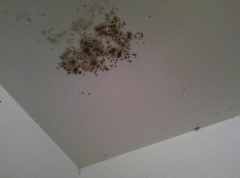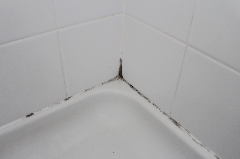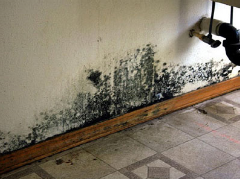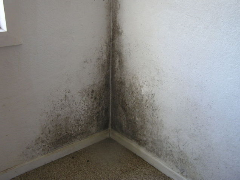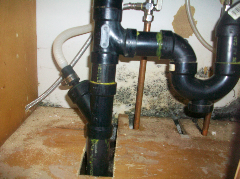

Copyright © Mold Inspection Network 2015-

Mold Inspection Network
Protect Your Home And Family Today

Is Your Home Safe?
864-


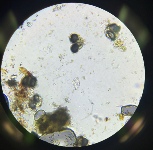

 Get A Free Consultation NOW
Get A Free Consultation NOW



Mold Inspection Network
655H Fairview Rd #274 Simpsonville, SC 29680
844-
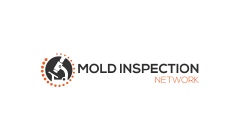

Basics of Mold
What is mold?
Mold is a living eukaryotic organism that has evolved to eat waste and dead materials. When trees die and fall in the woods, mold living in the soil grows on the trees and physically eats it. They produce something called enzymes to breakdown the trees so that they can absorb the nutrients. That is why a rotting log in the woods is so soft. The enzymes work similar to how our own saliva works. It softens the food so that it is easier to process. Some molds are macroscopic (meaning to see with the naked eye) while some are microscopic (microscope needed to view). Everyone has seen a common mushroom. This mushroom belongs to the fungi kingdom. Molds are an important part of the world as they help to recycle and keep the cycle of life moving. Animals and Molds have a symbiotic relationship, meaning they work together to make both organisms can have benefits from the other. Animals help spread mold by carrying mold spores in their hair or fur as an example. Mold has many benefits including: being a food source for some animals, being used to make life saving antibiotics, used in the cheese making process, and also used in some manufacturing applications. Molds reproduce using a cycle similar to trees. In this cycle they produce spores that are dispersed into the air. These spores randomly fall back to surfaces and if the right conditions (weather, dampness, turbulence) exist a new colony will be formed from the spores. Once a new colony starts mold develops root like structures called Hyphal Fragments or Hyphae. These structure burrow deep down into surfaces to release the enzyme molds use to breakdown their food. The Hyphae also collect the nutrients from the food and they produce the spores using something called a fruiting structure. They are like roots of a tree except they grow below and above the surface.
Why Is Mold Bad?
Not all interactions between animals and molds are pleasant however. When molds eat something like dead trees they produce waste just like us. This waste can contain toxins which are very harmful to humans. In nature this waste is not a huge concern because the earth has ways to dissipate the effects of the waste through: wind, atmospheric ozone, and just the general space that the earth provides. Unfortunately for us our homes cannot dissipate the toxic waste. Our homes have evolved over the years to be more energy efficient through the use of insulation in an attempt to make homes more “air tight”. This means that our homes literally trap all of the toxins inside with us. Homes need to have the air exchanged from the inside to outside regularly in order to keep the air from becoming stale or too damp. Closing a house up will create excess moisture that will allow mold growth. Many foreclosed homes on the market have been sitting empty and closed up for months with no power. This scenario is a breeding ground for mold. Anytime you must leave your home for extended periods of time be sure to leave the ac or heat running to circulate the air. Small enclosed spaces makes the toxin problem even worse. It is similar to neglected animals that have been left in homes without being able to go outside. When they create waste in such a small enclosed space this can become very harmful to the animals or anyone else trying to live in the same house. This over exposure to mold can cause serious health issues including: nasal and throat irritation, congestion, trouble breathing, asthma, cough, runny nose, and in some cases even fungal infections. Mycotoxins can also cause very serious health problems. In extreme conditions mycotoxins can cause neurological problems and even death. It would be rare for the conditions to exist that could produce this much exposure, so death is not very likely. These problems are exacerbated when immune compromised individuals live in the home. Without a healthy immune system these individuals have greater reactions to mold and develop high level of sensitivity. This sensitivity can carry on to even after the individual has moved out of the “moldy” home. That is why it is important to protect your family from mold.
How Do I Know If I Have A Mold Problem?
The most common complaint that will lead to a positive mold finding is smell. When molds produce all of that waste and toxin an abnormal and pungent odor is created. This odor has been described as musky and stale. If you notice any new or unknown odors it is best to investigate this immediately. Another way to know that you may have a mold problem is discovering a plumbing or roof leak that was hidden. Whenever your home has any type of leak there will be a chance that mold has started growing. Mold only needs moisture and a food source to grow and normally wet wood is a very good food source for mold. If anyone in your home has had a recurring illness with no known causes like sore throats and or sinus infections, it would be a good idea to have someone come and investigate for mold. Many times people will continue to go to the doctor over and over with the same illness. They are prescribed drugs to treat the symptoms but the root cause is never found. Without finding and solving the root cause many illnesses will simply come back given time. You can also visually see areas that may have mold. Commonly ceiling stains will have some type of mold growing there and these situations require professional help.
How Do You Test For Mold?
Mold is most commonly tested using an air pump and cassettes. The air pump pulls in air at a predetermined rate like 5 Litres of air per minute. This air is forced onto a cassette, inside the cassette there is a small glass slide that has a gel like substance similar to clear glue. This glue traps anything in the air. Another method is called surface sampling. Surface sampling employs either clear tape or the use of a sterile swab. Material is collected by physically touching the sampling media to the suspect area. The most important part of testing for mold is the visual inspection. Testing has many flaws and can sometimes show false positives or negatives. But our eyes and nose almost never fail. Your home should be checked from top to bottom for signs of water damage and mold. Without a proper visual inspection the test results will not give you much useful information.
How To Remove Mold?
Mold is simple enough to clean. But unless you stop the source the mold will almost always return. It is very important to understand why mold is growing in your home. The mold growth needs to be traced back to an event like a roof leak or a plumbing failure. The event needs to be corrected before any cleaning takes place. Once the source has been stopped you can now remove the damaged material and wipe down the area with a disinfectant. New material should be used in place of the damaged material. This work should be performed by a professional mold remediation contractor. All workers performing this work should use personal protective equipment like masks and respirators. Also most times during remediation a complete containment needs to be properly maintained. Containments are the process of physically constructing a barrier between the damaged and healthy parts of the building. They are necessary because you don’t want to contaminate the rest of your home during remediation. Cleaning and removing materials will cause more mold spores than normal to enter the air. This makes wearing the proper protective equipment and building a sound containment very important. Make sure whomever does your remediation is educated in how to use these tools properly. Contractors not using containment or in some cases not even knowing what it means is a sign that you are dealing with an inexperienced mold remediation company. It would be best to try to educate yourself on the many facets of mold remediation before trying to hire a company to come out. After your home has been cleaned it would be vital at this point to have clearance testing performed to ensure that the remediation crew did their job and that your home has acceptable levels or airborne mold spores. Clearance samples should be performed by a third party that does not have any interest in the results. Remediation companies have a conflict of interest when they take samples to clear their own work. It’s best to use someone who is not invested in how the results come out.
If I Think I Have A Mold Infection In My Home, Is It Safe To Stay In My Home?
This would be a case by case scenario. Your home would need to be tested to see how severe the issue is. There is however a scenario where it would be in your best interest to leave your home until the mold problem has been solved. An example of this would be an immune compromised individual living in a home that has severe water damage that has since the damage dried out. The drying out process will cause mold to produce more spores and release them into the air. A healthy person might be ok to stay in the house while the problem is being corrected, but someone with a weakened immune system would be setting themselves up to get a serious infection if they remain in the home. Some molds are opportunistic meaning they will literally exploit a compromised individual’s weak immune system. While most molds that can cause infection are able to infect even healthy individuals in certain circumstances, most infections occur in those who are already sick and weakened. It’s important to remember than almost no one conducting mold tests or doing consulting for mold is a doctor. You should consult a medical doctor with any personal health concerns. Mold inspectors are not trained to match symptoms with exposure and etc. Any mold “guru” claiming to know what type of mold you have based on your health is simply being dishonest. Consult mold inspectors for your home’s health and consult medical doctors for your own health.
